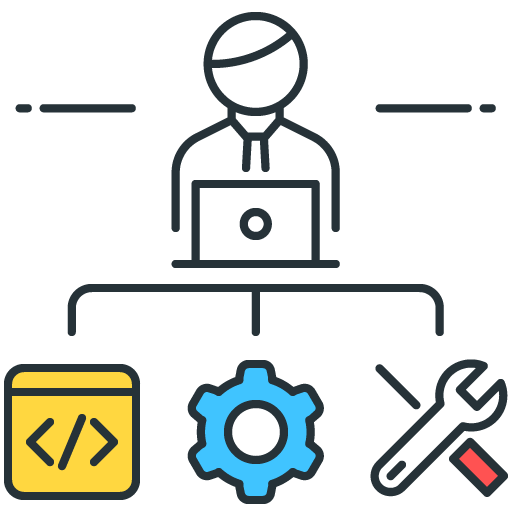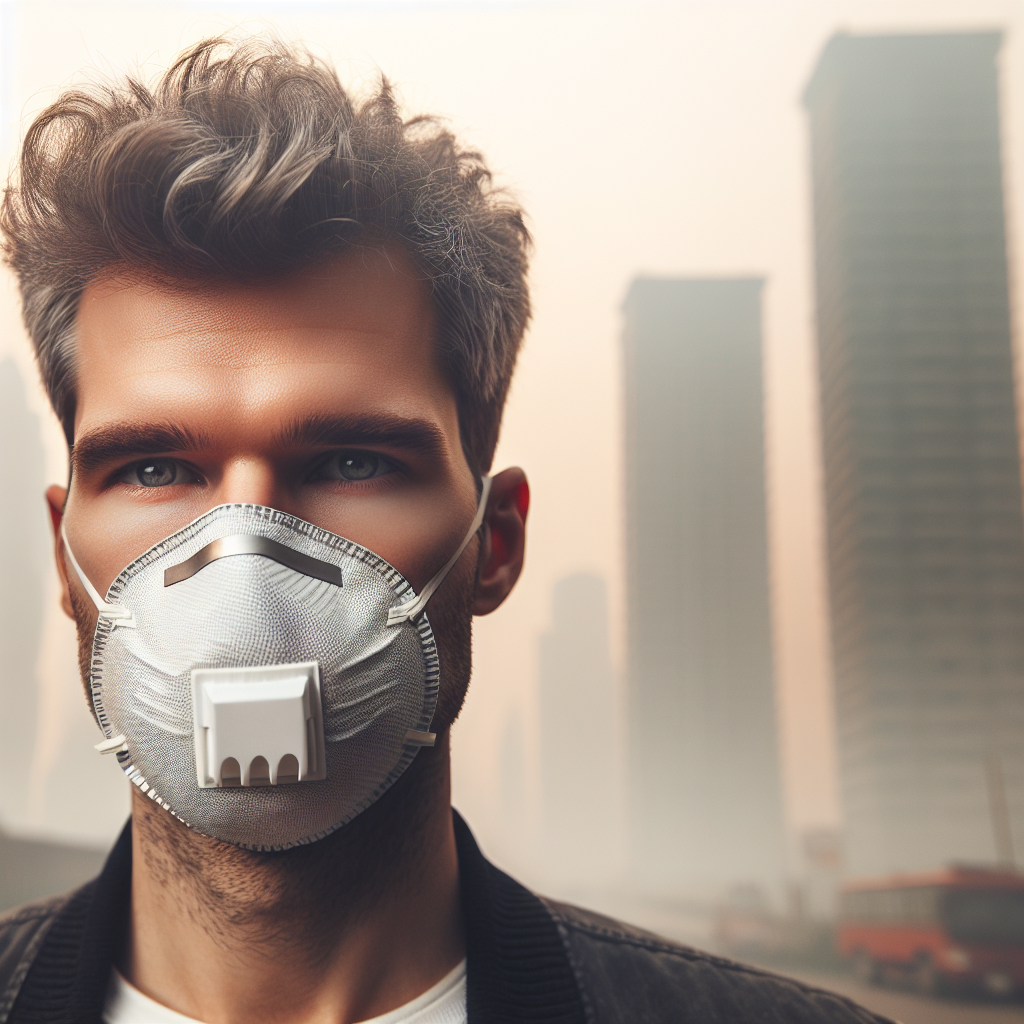
Start thinking more like an analyst.
Learn data science, natural language processing, and big data analysis essentials at your own pace.
science4datascience4data
science4datascience4datascience4datascience4datascience4datascience4datascience4datascience4datascience4datascience4datascience4datascience4datascience4data
How Climate Change Is Worsening Air Pollution for Millions of Americans
Air pollution is not a new concern, but recent data highlights a disturbing trend: nearly half of Americans are breathing polluted air, a situation worsened by extreme heat and wildfires. These environmental factors are significantly degrading air quality, posing serious health risks to millions.
Extreme heat is a major contributor to air pollution. High temperatures can increase the concentration of ground-level ozone, a harmful pollutant that affects respiratory health. As heatwaves become more frequent and intense due to climate change, the risk of ozone pollution rises, impacting air quality across the nation.
Wildfires are another significant source of air pollution. As climate change leads to drier conditions, the frequency and intensity of wildfires have increased. These fires release large amounts of smoke and particulate matter into the air, which can travel long distances and affect air quality far from the fire’s origin.
Breathing polluted air has serious health implications. Short-term exposure can cause respiratory issues, while long-term exposure is linked to chronic conditions such as asthma, heart disease, and even premature death. Vulnerable populations, including children, the elderly, and those with pre-existing health conditions, are particularly at risk.
California serves as a stark example of the impact of wildfires on air quality. In recent years, the state has experienced some of the largest and most destructive wildfires in its history. These fires have not only devastated communities but also significantly worsened air quality, affecting millions of residents.
To combat air pollution, policymakers must implement stricter regulations on emissions and invest in clean energy solutions. This includes transitioning away from fossil fuels, promoting renewable energy sources, and enforcing stricter vehicle emissions standards.
Communities can also play a role in improving air quality. Initiatives such as tree planting, promoting public transportation, and encouraging energy-efficient practices can make a difference. On a personal level, individuals can reduce their carbon footprint by using energy-efficient appliances, reducing car travel, and supporting sustainable practices.
Advancements in technology have made it easier to monitor air quality in real-time. Mobile apps and online platforms provide up-to-date information on air quality levels, allowing individuals to make informed decisions about outdoor activities and take precautions when necessary.
The issue of air pollution, exacerbated by extreme heat and wildfires, is a pressing concern that affects nearly half of Americans. By understanding the causes and impacts, and taking proactive steps at both the policy and personal levels, we can work towards cleaner air and a healthier future.
Science4Data is committed to cut through greenwashing and measure real impact. Join the journey to a sustainable future. Your actions matter.
The Impact of Climate Change on Finger Lakes Wine
In the heart of New York, the Finger Lakes region is renowned for its picturesque landscapes and, more importantly, its thriving wine industry. However, beneath the surface of this idyllic setting lies a growing concern: climate change. As global temperatures rise and weather patterns shift, the Finger Lakes wine industry faces unprecedented challenges.
The Finger Lakes region, with its unique microclimate and rich soil, has long been a haven for viticulture. Known for producing exceptional Rieslings and other cool-climate wines, this area has gained international acclaim. However, the very factors that make it ideal for winemaking are now under threat due to climate change.
One of the most significant effects of climate change is the increase in average temperatures. For the Finger Lakes, this means longer growing seasons and earlier harvests. While this might sound beneficial, it poses several challenges. Higher temperatures can lead to changes in grape sugar levels, acidity, and flavor profiles, affecting the quality of the wine. Additionally, warmer climates can lead to a rise in pests and diseases that were previously uncommon in the region.
Climate change is also causing more erratic weather patterns, including late spring frosts that can damage young vines, reducing yields. Increased precipitation can lead to soil erosion and waterlogged vineyards, impacting grape quality. These unpredictable weather patterns make it difficult for winemakers to plan and manage their vineyards effectively.
Winemakers in the Finger Lakes are not standing idly by. They are employing various strategies to adapt to the changing climate. To combat the effects of climate change, some winemakers are experimenting with grape varieties that are more resilient to heat and disease. This includes planting hybrids and other less traditional varieties that can thrive in warmer conditions.
Sustainability is becoming a cornerstone of the Finger Lakes wine industry. Winemakers are adopting practices such as cover cropping to improve soil health and reduce erosion, and implementing efficient irrigation systems to conserve water and protect against drought. These sustainable practices not only help mitigate the effects of climate change but also contribute to the long-term health of the vineyards.
Technology is playing a crucial role in helping winemakers adapt. From precision agriculture to advanced weather forecasting, these tools are enabling more informed decision-making. By using data-driven insights, winemakers can optimize their vineyard management practices, ensuring the best possible outcomes despite the challenges posed by climate change.
Despite the challenges posed by climate change, the Finger Lakes wine industry remains resilient. By embracing innovation and sustainability, winemakers are not only preserving their craft but also paving the way for a more sustainable future. The impact of climate change on the Finger Lakes wine industry is undeniable, but it’s not insurmountable. By supporting local wineries, advocating for sustainable practices, and raising awareness about climate change, we can all play a part in ensuring the future of this cherished region.
The Finger Lakes wine industry is at a crossroads. The effects of climate change are being felt across the region, but the resilience and adaptability of the winemakers offer hope for the future. By continuing to innovate and embrace sustainable practices, the Finger Lakes can continue to produce world-class wines for generations to come. So, next time you enjoy a glass of Finger Lakes wine, remember the dedication and resilience of the winemakers who are working tirelessly to adapt to a changing world. Let’s raise a glass to the winemakers who are leading the charge and to a future where the Finger Lakes continue to thrive.
Science4Data is committed to cut through greenwashing and measure real impact. Join the journey to a sustainable future. Your actions matter.
The Power of Customization – How Tailored Digital Solutions Drive Business Success
In today’s hyper-competitive business environment, generic software solutions are no longer enough to keep pace with rapidly changing markets, shifting customer demands, and complex operational challenges. Every business is unique, and the tools you use to drive growth need to reflect that.
At Science4Data, we specialize in delivering customized digital solutions that go beyond the off-the-shelf products. Our tailored software and complex integration projects are designed to solve your most pressing business challenges, enhance operational efficiency, and unlock new levels of scalability. Here’s how we do it—and why it matters for your business.
Why Customized Digital Solutions are Crucial for Modern Businesses
As businesses scale and evolve, they face a growing need for software that adapts to their unique workflows, integrates seamlessly with existing systems, and empowers teams to make data-driven decisions quickly. Here’s why customization is the key to staying ahead of the competition:
-
Tailored Efficiency: One-size-fits-all software can create more problems than it solves. By customizing your digital tools, you eliminate inefficiencies and ensure your systems align with your business processes. This leads to improved workflow, faster decision-making, and reduced operational bottlenecks.
-
Unleashing Data Potential: With data becoming the most valuable asset for businesses today, the ability to extract meaningful insights is essential. Custom solutions allow businesses to harness their data in a way that off-the-shelf products simply can’t. Whether it’s AI-driven analytics, advanced data intelligence, or real-time reporting, customized solutions give you the power to unlock actionable insights from even the most complex data sets.
-
Agility and Scalability: Growth is unpredictable, and your business needs the flexibility to pivot quickly. Custom solutions are built with scalability in mind, ensuring that as your business expands, your technology evolves with you. Whether you’re launching a new product, entering a new market, or scaling operations, your tech stack should grow with you—effortlessly.
-
Competitive Advantage: The businesses that thrive in today’s digital world are the ones that can move fast, adapt to change, and respond to customer needs in real-time. By using customized software that fits perfectly within your operations, you gain an edge over competitors relying on rigid, one-size-fits-all solutions.
What Science4Data is Doing for Clients
We don’t believe in “one-size-fits-all.” Our focus is on bespoke digital solutions that transform how businesses operate, make decisions, and grow. We offer cutting-edge services in AI-driven insights, data intelligence, and workflow automation, all built around your business’s unique needs.
Here’s a closer look at what we’re doing for our clients:
1. AI-Powered Market Research
In an industry where data is everything, we’ve helped companies transform how they analyze market trends and consumer behavior. By building custom AI solutions, we enable our clients to process vast amounts of unstructured data, extracting valuable insights that drive smarter strategic decisions. This means faster go-to-market strategies, improved customer segmentation, and more precise product positioning—all powered by custom-built AI models tailored to each client’s specific market.
2. M&A Due Diligence Automation
Mergers and acquisitions are complex, data-intensive processes. Our customized due diligence automation tools streamline the entire process, reducing the time needed for evaluations and improving the accuracy of financial forecasts and risk assessments. By leveraging AI and machine learning, we help private equity firms and corporate buyers make faster, more informed investment decisions.
3. Financial Spreading Automation for PE & M&A
Financial analysts spend hours processing spreadsheets and reports, but this laborious task can be automated. Our tailored solutions help financial teams automate the financial spreading process, enabling faster, more accurate assessments of company performance and financial health. This boosts productivity, reduces errors, and accelerates deal timelines—helping businesses stay ahead in the fast-paced world of private equity and M&A.
4. Advanced Data Intelligence Solutions
Data-driven decisions are essential for businesses looking to scale quickly. We build bespoke data intelligence platforms that integrate with existing systems, giving businesses a single, unified view of their most critical data. Our custom solutions help companies track KPIs, monitor performance in real time, and derive insights that drive operational improvements and cost savings.
Our Approach – Building Solutions That Evolve with You
Our work begins with deep collaboration. We take the time to understand your unique business needs, pain points, and strategic goals before embarking on a custom solution. Every solution we build is designed with flexibility in mind, ensuring that it can evolve as your business grows and adapts to future challenges.
Whether you’re looking to enhance operational efficiency, scale your technology infrastructure, or make smarter data-driven decisions, we build solutions that align with your vision for the future.
Why Choose Science4Data?
-
Expertise in Complex Integrations: We specialize in integrating bespoke solutions with existing systems, ensuring seamless adoption and minimal disruption.
-
AI and Automation Focus: Our solutions leverage the power of AI, machine learning, and automation to streamline operations and accelerate decision-making.
-
Scalable Solutions: As your business grows, your digital solutions evolve with you. Our custom solutions are designed for scalability, allowing you to keep pace with new opportunities and challenges.
-
Proven Impact: We’ve helped clients across industries improve operational efficiency, enhance data-driven insights, and gain a competitive edge with tailored digital solutions.
The Future of Digital Transformation – Customization is Key
The future of business lies in technology that adapts to your needs, not the other way around. Off-the-shelf software is no longer enough to keep up with the demands of modern business. At Science4Data, we build custom digital solutions that provide a strategic advantage, enabling you to stay ahead of the curve in an increasingly data-driven world.
If you’re ready to unlock your business’s full potential with tailored technology, it’s time to partner with us. Our team is here to help you streamline operations, harness data, and scale your business for long-term success.
Ready to Transform Your Business?
Discover how we can drive your digital transformation through bespoke solutions that fit your unique business needs. Get in touch with us today to start building the future of your business.
Tornado Surge – Doubling March Averages and Its Impact
Recent reports indicate a significant increase in tornado activity, with occurrences doubling the March average. This surge marks an active start to the severe weather season, underscoring the importance of understanding atmospheric conditions and temperature fluctuations that contribute to such trends. Tornadoes, as one of the most violent forms of severe weather, pose substantial risks to life and property. Their increased frequency and intensity necessitate enhanced forecasting and preparedness efforts. Meteorologists and climate scientists are working tirelessly to improve predictive models and early warning systems, which are crucial for minimizing the impact of these devastating events.
The National Oceanic and Atmospheric Administration (NOAA) plays a vital role in maintaining accurate climate data. Regular updates are made to incorporate new data, improve measurement techniques, and correct past errors. These adjustments ensure that climate research and policy-making are based on reliable information, allowing for a better understanding of climate trends and patterns. NOAA’s efforts in refining climate data are essential for tracking long-term changes and informing global climate policy. By providing a clearer picture of the climate system, NOAA helps guide international efforts to address climate change and its consequences.
Temperature data undergoes changes to account for various factors affecting accuracy. Instrumental changes, location shifts, urban heat island effects, and data homogenization are key reasons for these adjustments. By refining temperature records, scientists can accurately track and analyze climate changes, providing a solid foundation for addressing climate challenges. These adjustments are not merely technical corrections; they are vital for ensuring that the data reflects true climatic conditions. Accurate temperature records are crucial for understanding the pace and extent of global warming, which in turn influences policy decisions and adaptation strategies.
The climate crisis is already manifesting in several immediate impacts. These include increased frequency of extreme weather events, rising sea levels, ecosystem disruption, agricultural challenges, and human health risks. Extreme weather events, such as hurricanes, floods, and droughts, are becoming more common and severe, causing widespread damage and displacement. Rising sea levels, driven by melting ice caps and thermal expansion, threaten coastal communities and ecosystems. Ecosystem disruption leads to habitat loss and species extinction, while agricultural challenges affect food security and livelihoods. Human health risks are exacerbated by heatwaves, air pollution, and the spread of vector-borne diseases. Addressing these impacts requires immediate action to mitigate climate change and adapt to its effects, ensuring a sustainable future for the planet.
Science4Data is committed to cut through greenwashing and measure real impact. Join the journey to a sustainable future. Your actions matter.
Urban Trees – Sentinels of Climate Change
In the face of escalating climate change challenges, urban trees have emerged as vital tools for understanding the impacts of these changes on plant life. Nestled within the bustling environments of cities, these trees face unique conditions that make them invaluable for scientific research. Urban trees are exposed to increased temperatures, altered precipitation patterns, and various stressors that differ significantly from those in rural areas. This exposure positions them as ideal indicators of how plant species might adapt to future climate scenarios, providing a window into the broader ecological impacts of climate change.
The study of urban trees offers a unique perspective on the complex interactions between climate variables and plant responses. These trees are subject to a range of environmental factors, including shifting temperatures, changes in rainfall patterns, soil conditions, and genetic influences. Understanding these variables is essential for predicting how urban trees will respond to future climate scenarios. Researchers must consider the intricate interplay of these factors to develop accurate models of plant adaptation and resilience in urban settings.
One of the most significant phenomena affecting urban trees is the creation of urban heat islands. Cities, with their abundance of concrete and buildings, trap heat and raise local temperatures, creating microclimates that differ significantly from surrounding rural areas. This increased heat can stress urban trees, affecting their growth patterns and overall health. By studying the impact of urban heat islands on trees, researchers can gain insights into how rising global temperatures might affect plant life in the future. The comparison of urban trees with their rural counterparts provides valuable insights into the specific impacts of urban environments on plant life. Urban trees often face more significant stressors due to pollution, limited space, and altered water availability. By examining these differences, researchers can isolate the effects of urbanization from broader climate change impacts, providing a clearer picture of how cities influence plant growth and resilience.
The implications of this research are far-reaching. The study of urban trees offers critical data for predicting future climate impacts on plant life. These insights are essential for developing strategies to mitigate the adverse effects of climate change on ecosystems. By understanding how urban trees adapt to changing conditions, researchers can inform conservation efforts and urban planning to enhance the resilience of plant species in the face of climate change. Urban trees serve as vital indicators of climate change, offering insights into how plant life may adapt to future environmental shifts. Their unique positioning within city environments makes them ideal subjects for studying the complex interactions between climate variables and plant responses. As researchers continue to explore the role of urban trees in climate change studies, they contribute to a deeper understanding of how ecosystems might evolve in response to ongoing environmental changes.
Urban trees are not just passive elements of city landscapes; they are active participants in the ongoing dialogue about climate change and its effects on plant life. Their presence in urban environments provides a unique opportunity to study the impacts of climate change in real-time, offering valuable insights that can inform future conservation and urban planning efforts. As the world continues to grapple with the challenges of climate change, the study of urban trees will remain a critical component of our efforts to understand and mitigate its impacts on the natural world.
Science4Data is committed to cut through greenwashing and measure real impact. Join the journey to a sustainable future. Your actions matter.







